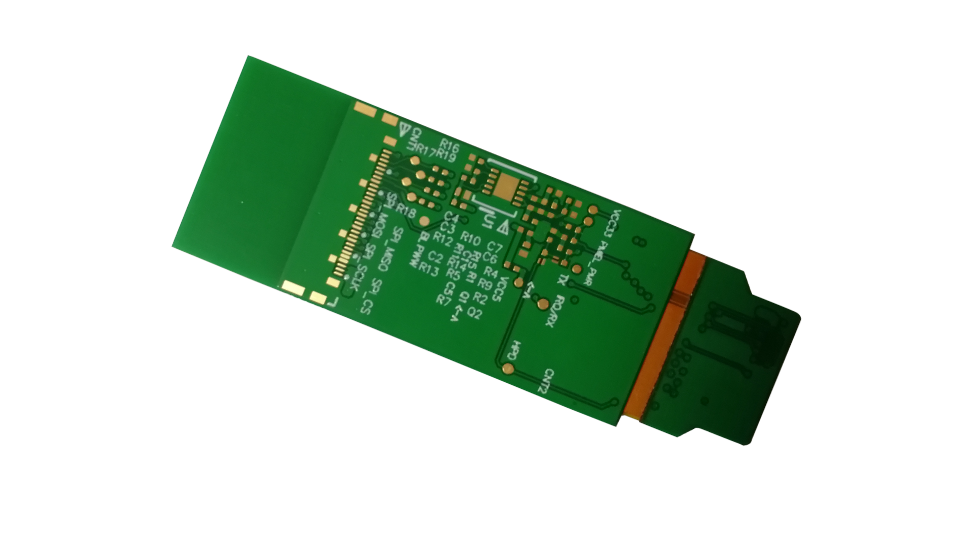Introduction
Flexible Printed Circuits (
FPCs) are indispensable components in modern electronic devices, and the design of their laminate structures directly relates to the circuit board's performance, reliability, and manufacturing cost. This article will provide an in-depth professional analysis of the different laminate structures of FPCs, explore design optimization strategies, and discuss the challenges and solutions faced in practical applications.
I. Professional Analysis of Single-Layer FPC
Structural Characteristics: A single-layer FPC consists of a layer of conductive copper foil and a substrate, with the copper foil etched with a circuit pattern and covered with a protective film. This structure is the simplest and lowest in cost, but its electrical performance and wiring complexity are limited.
Application Scenarios: Suitable for small electronic devices with low electrical requirements, such as camera modules and LCD connectors. In these applications, the flexibility and low cost of single-layer FPCs are their main advantages.
Design Optimization: To enhance the durability of single-layer FPCs, materials with high flexibility and bending resistance, such as thinner substrates and copper foil, can be selected. Additionally, optimizing the circuit layout and wiring design can improve circuit performance without increasing costs.
II. Professional Analysis of Double-Layer FPC
Structural Characteristics: A double-layer FPC contains two layers of conductive copper foil separated by a substrate, with vias providing cross-layer connections. This structure increases wiring density and circuit design complexity.
Application Scenarios: Suitable for electronic components requiring higher-density wiring, such as sensors, headphones, and buttons. In these applications, the wiring flexibility and electrical performance of double-layer FPCs are their key advantages.
Design Optimization: When designing double-layer FPCs, special attention should be given to the position and size of vias to ensure the firmness and stability of cross-layer connections. Furthermore, reasonable wiring design and signal shielding can reduce electromagnetic interference and improve the overall circuit performance.
III. Professional Analysis of Multi-Layer FPC
Structural Characteristics: Multi-layer FPCs are composed of multiple layers of conductive copper foil and substrates stacked together, bonded by adhesive layers, with vias connecting the layers. This structure supports more complex wiring and signal isolation.
Application Scenarios: Widely used in high-performance, high-density electronic devices, such as smartphone motherboards and medical equipment. In these applications, the high performance and reliability of multi-layer FPCs are their core advantages.
Design Optimization: When designing multi-layer FPCs, factors such as wiring density, signal isolation, electromagnetic compatibility, and manufacturing cost need to be comprehensively considered. By optimizing the number of layers, material selection, and wiring design, costs can be reduced while meeting performance requirements.
IV. Professional Analysis of Rigid-Flex FPC
Structural Characteristics: Rigid-Flex FPCs combine the advantages of flexible circuits and rigid circuit boards, retaining the flexibility of FPCs while possessing the high strength and stability of PCBs.
Application Scenarios: Suitable for complex three-dimensional wiring and high-reliability connection requirements, such as smartphones, tablets, and wearable devices. In these applications, the flexibility and high performance of rigid-flex FPCs are their unique advantages.
Design Optimization: When designing rigid-flex FPCs, special attention should be given to the transition design between flexible and rigid areas to ensure that the circuit is not damaged during bending and folding. Additionally, by selecting appropriate materials and optimizing manufacturing processes, the durability and reliability of the circuit can be improved.
V. Design Considerations and Professional Advice for Laminate Structures
Material and Thickness Selection: Based on the bending requirements, electrical conductivity, and operating environment of the product, reasonably select the materials and thicknesses of the substrate, copper foil, and adhesive layers. For high-frequency bending scenarios, pressed copper foil and thinner substrates are recommended.
Via and Wiring Design: In multi-layer structures, vias are used for cross-layer connections. During design, ensure the firmness and stability of vias. Wiring design should consider the stability of signal transmission and avoid cross-interference and signal reflection.
Manufacturing Process Adaptability: The design of laminate structures should take into account the requirements of the actual manufacturing process, avoiding overly complex layer designs to reduce production difficulty and manufacturing costs. During production, maintain the uniformity of each layer of material to ensure the overall consistency and reliability of the FPC.
Reliability Testing and Verification: After design completion, reliability tests, including bending tests, temperature cycling tests, humidity tests, etc., should be conducted to ensure that the FPC meets requirements in practical use.
Continuous Technological Innovation and Optimization: As electronic devices continue to develop, the requirements for FPCs are also constantly increasing. Therefore, continuous technological innovation and optimization are key to driving the development of the FPC industry. By introducing new materials, processes, and technologies, the performance and reliability of FPCs can be continuously improved.
Conclusion
The design of FPC laminate structures is a critical factor in their performance, reliability, and cost-effectiveness. By deeply analyzing the characteristics and application scenarios of different laminate structures and combining professional design optimization strategies, optimal laminate structure solutions can be developed. At the same time, paying attention to manufacturing process adaptability, reliability testing, and continuous technological innovation is also an important way to improve FPC performance. With the thinning and multifunctionality of electronic devices, higher requirements are placed on the laminate structures of FPCs. Therefore, continuously driving technological innovation and optimization will be the main trend in the future development of the FPC industry.



